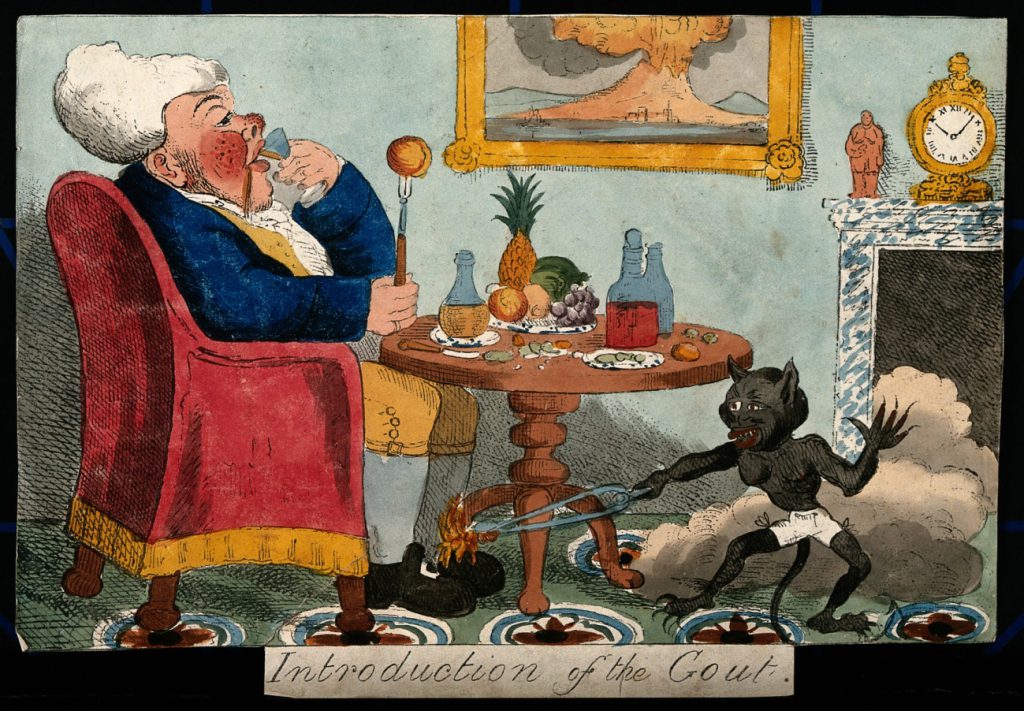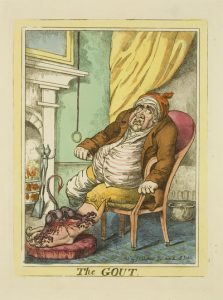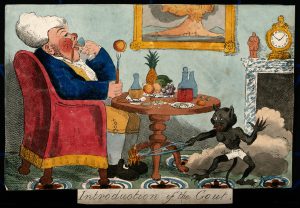Deciphering the Drop

Greetings to all readers interested in rheumatic diseases! We welcome you to our blog. This space will become a reliable source of serious and evidence-based information to better understand the complexities of rheumatology.
In this first entry, we will dive into the world of gout, or gouty arthritis, known since ancient times as the “disease of kings”. Gout manifests itself through abrupt episodes of intense pain, swelling, redness, great sensitivity to touch and increased local temperature in one or more joints.

The gout, this demon that bites the big toe.
the origin
This inflammation is triggered by the formation of microcrystals of a uric acid salt, specifically monosodium urate monohydrate, inside the joints. Outbreaks of inflammation are a direct consequence of the presence of these glasses, and never happen in their absence. The formation of urate crystals requires high levels of uric acid in the blood, a condition known as hyperuricemia. Although hyperuricemia is common, affecting 7% of the population, only a minority of people with it develop crystals and experience gout attacks.
The symptoms
Gout essentially causes joint inflammation, usually in the form of acute arthritis affecting a single joint, known as monoarthritis. In a matter of hours, a previously asymptomatic joint becomes intensely inflamed. Inflammation is manifested by swelling, caused by filling the joint cavity with synovial fluid, forming an effusion. The surface of the joint can become red and, of course, become intensely painful, making it difficult to function due to the pain. In some cases, the inflammation may be less intense, resulting in more bearable discomfort.
There are several joints prone to gout attacks, the most common being those at the base of the big toe, called gout attacks. It also affects the ankle, knee, and in rarer cases, wrists or fingers. In addition, gout can present itself in the form of bursitis, inflaming, for example, the synovial bag in the elbow or the one that surrounds the Achilles tendon when it joins the heel.

Alcohol, obesity, hearty food and… fruits? Note the detail in the painting of the erupting volcano, a foreshadowing of what is to come.
The diagnosis
The presence of urate crystals is essential to trigger inflammation in the joints. These crystals are identified using a polarized light microscope in the synovial fluid removed from inflamed joints during gout attacks, and their detection is considered a pathognomonic sign of the disease. In addition, crystals can be easily identified in the material obtained from a tofu or in fluid from asymptomatic joints that were previously inflamed.
The treatment
Gout, despite its painful impact, currently has a very effective treatment. This treatment addresses two problems independently: the acute gout attack and the increase in uric acid in the blood, i.e. hyperuricemia. In the first phase, the aim is to de-inflame the affected joint, traditionally using oral colchicine. In a second phase, colchicine is combined with hypouricemic treatment, such as allopurinol or febuxostat. In the third phase, the hypouricemia is simply maintained.
The duration of maintenance treatment is a controversial issue. In principle it is indefinite, since one of the most common causes of gout is the genetic hyperproduction of uric acid. However, factors such as excessive alcohol intake, diets rich in purines, certain medications or diseases such as psoriasis or psoriatic arthritis can produce excess urates, contributing to the development of gout, and in cases such as these , the modification or elimination of risk factors may allow withdrawal of treatment. In any case, evaluation and follow-up by a rheumatologist are essential.

Indeed, grandfather Cebolleta had gout. Badly treated, we suppose, because gout heals…
